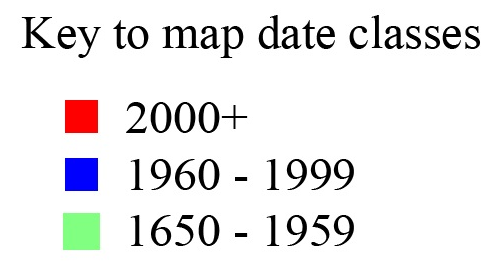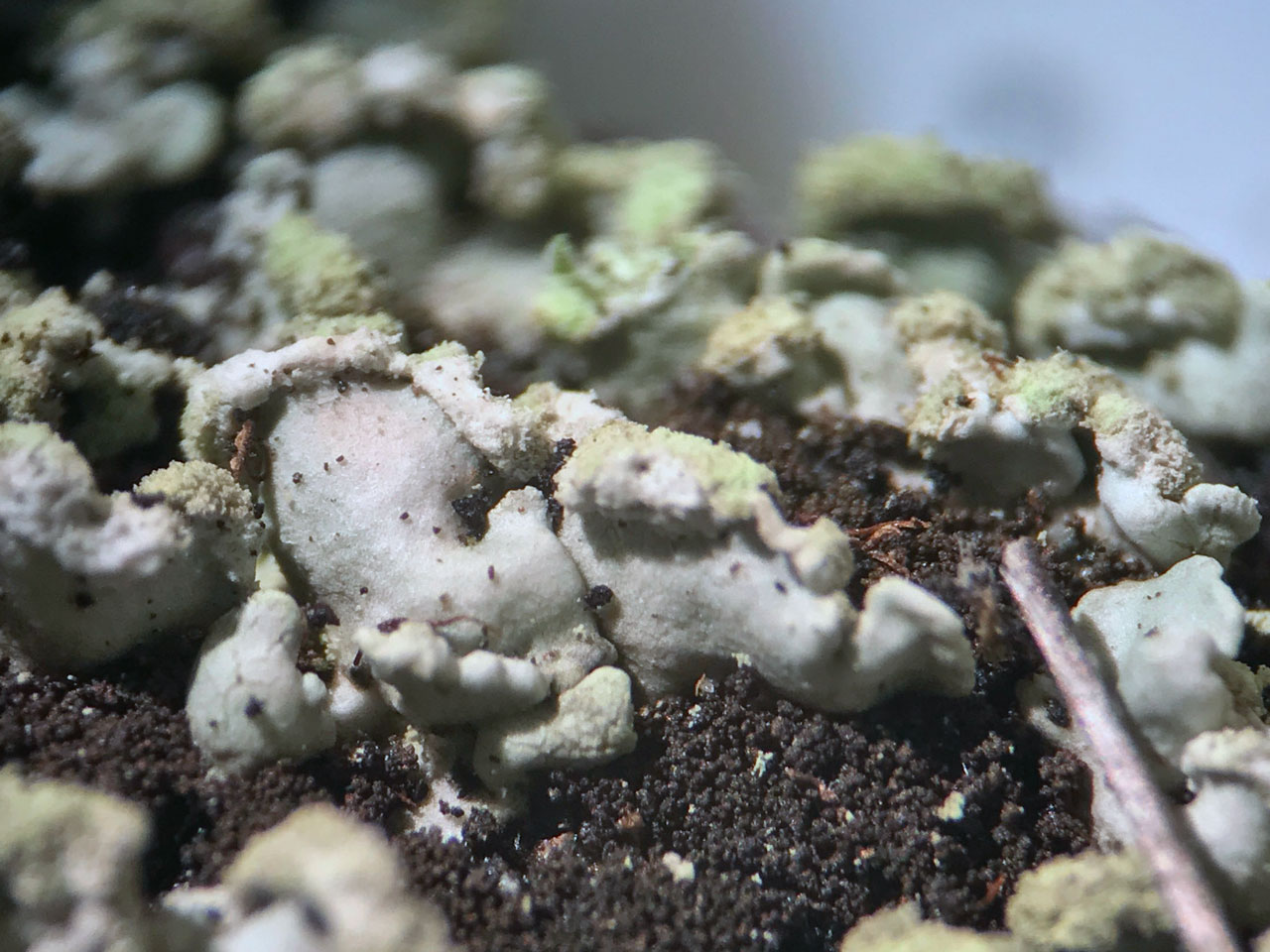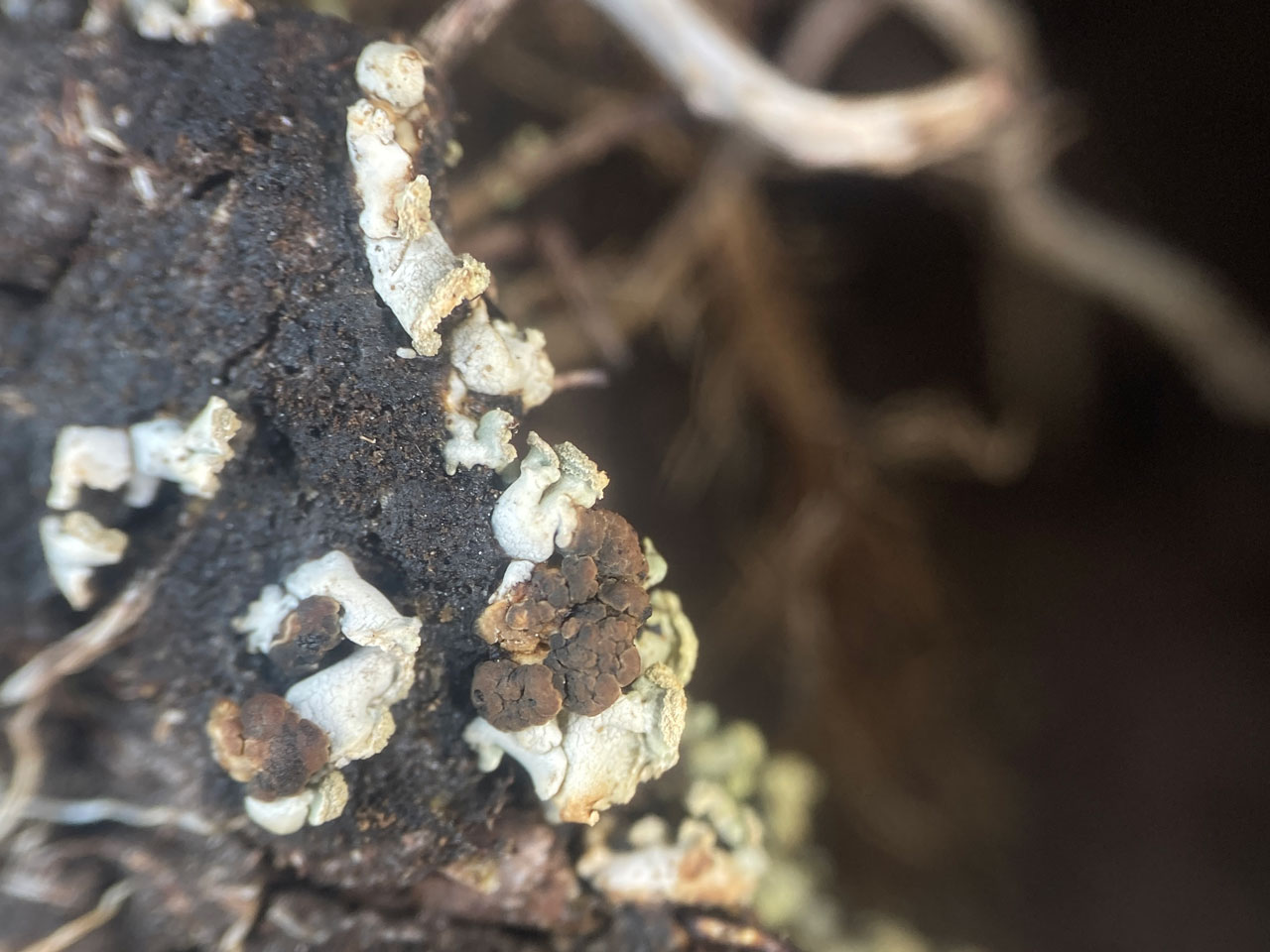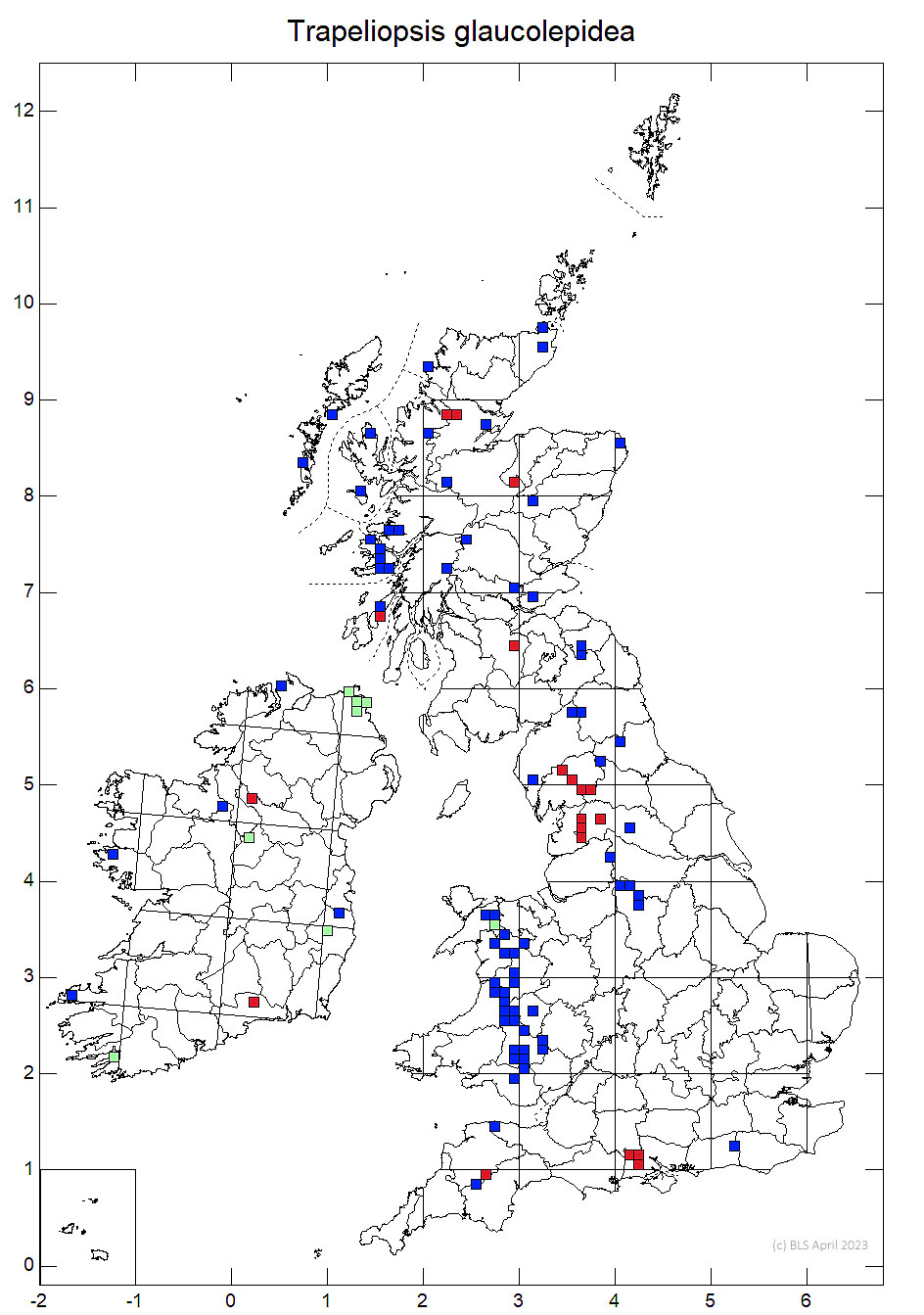A neat little lichen with sliver-grey squamules with ascending sorediate apices and a distinctive UV+ glaucous fluorescence. The main habitat is exposed peat in the uplands, but it also occurs on lignum and disturbed areas on heathland.
Thallus squamulose; squamules scattered or contiguous, (0.3–) 0.7–2.5 mm diam. with ascending, usually sorediate apices, grey-white to glaucous-grey, mostly with pale grey or greenish grey lip-shaped to ± capitate soralia. Apothecia 1.0–2.5 mm diam., sessile, at first flat and with the exciple ± distinct, later becoming convex and the exciple excluded; disc pale dull grey to dark grey, or dull reddish brown, margin often paler. Ascospores 8–11 × 4–5 µm. Thallus and soralia C–, K–, KC–, Pd–, UV± glaucous (unidentified UV+ substance).
Resembles a diminutive Hypogymnia physodes or small Cladonia squamules when on peaty soil. On rotten wood, it may be accompanied by Placynthiella icmalea. Trapeliopsis percrenata was distinguished by smaller squamules and soralia that may be ± capitate, but Palice & Printzen (2004) and Resl et al. (2015) found that the two taxa are conspecific.
On bare peaty turf and edge of peat hags, or on shaded moist rotting wood of fallen trunks and tops of old fence posts; rarely on old ant hills on moorlands and the sides of rabbit holes in heathland.

Local but probably much under-recorded in uplands, probably very rare in the lowlands.
A local species mainly found on lichen rich areas of blanket bogs, including on peat hags, but also rarely in other habitats. Possibly locally threatened by peat land restoration schemes that cover up all areas of stable bare peat.
Britain: Notable
Orange, A., Cannon, P., Aptroot, A., Coppins, B., Sanderson, N. & Simkin, J. (2021). Baeomycetales: Trapeliaceae, including the genera Coppinsia, Placopsis, Placynthiella, Rimularia, Trapelia and Trapeliopsis. Revisions of British and Irish Lichens 18: 1-19.
Palice, Z. & Printzen, C. (2004) Genetic variability in tropical and temperate populations of Trapeliopsis glaucolepidea: evidence against long-range dispersal in a lichen with disjunct distribution. Mycotaxon 90: 43–54.
Resl, P., Schneider, K., Westberg, M., Printzen, C., Palice, Z., Thor, G., Fryday, A., Mayrhofer, H. & Spribille, T. (2015). Diagnostics for a troubled backbone: testing topological hypotheses of trapelioid lichenized fungi in a large-scale phylogeny of Ostropomycetidae (Lecanoromycetes). Fungal Diversity 73: 239–258.
Text by Neil A Sanderson based on Canon et al (2021)


